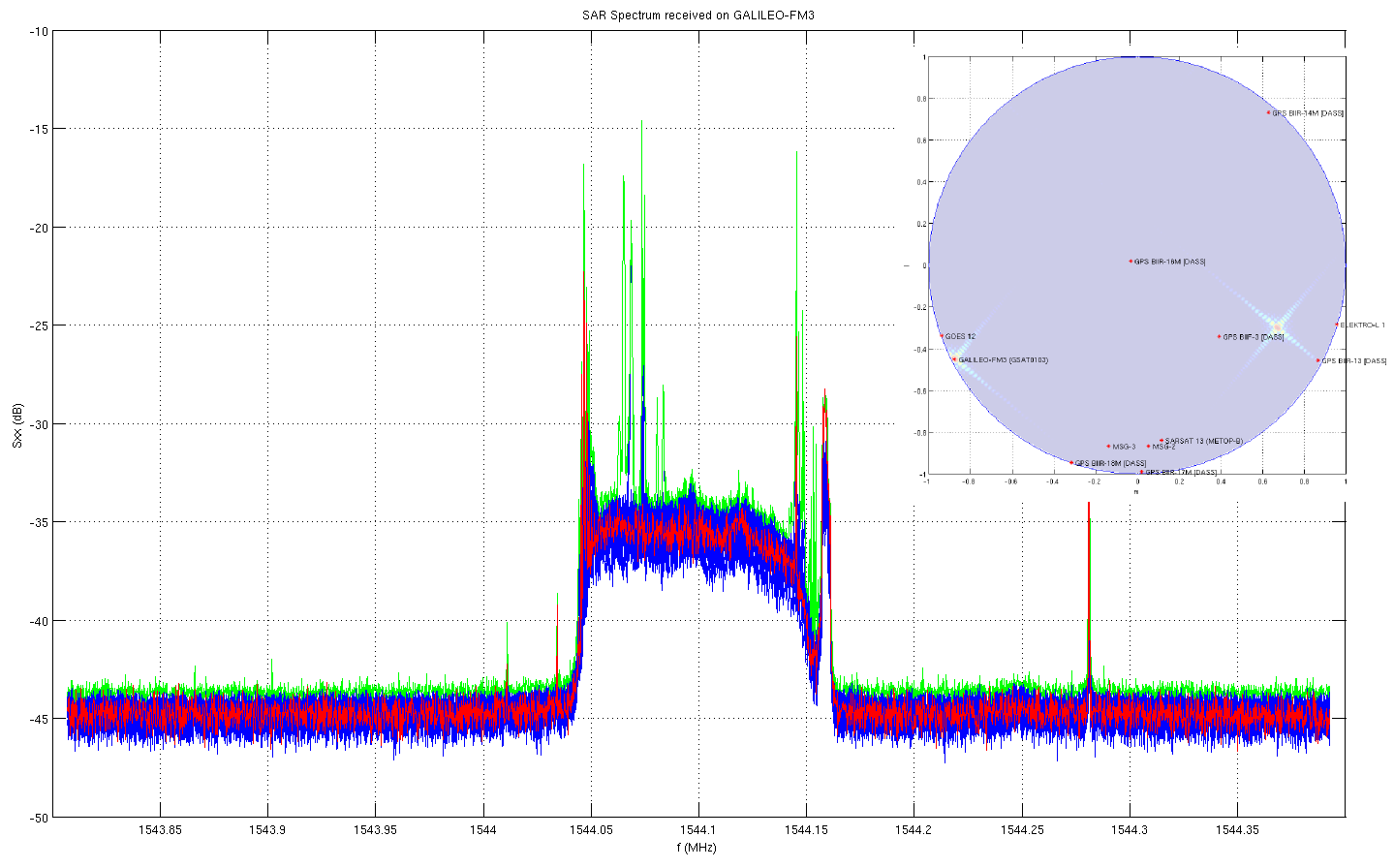Daily Image
17-10-2013EMBRACE receives SAR signals from a Galileo satellite
| Submitter: | Dion Kant |
| Description: | Galileo satellites are equipped with Search and Rescue (SAR) transponders and form an important part of the MEOSAR system which provides a global SAR service. The MEOSAR system consists of: 1. Beacons which, when enabled, transmit distress signals to SAR satellites; 2. The SAR satellites relaying distress signals back to SAR receive stations on earth; 3. The SAR receive stations, referred to as MEOLUTs, which determine the positions of beacons in distress. Currently, two Galileo satellites (FM3 and FM4) are providing the SAR service. EMBRACE was used to detect the SAR signal from Galileo-FM3 and the spectrum of the received signal is shown in the plot. The satellite relays SAR signals in a 100 kHz band centered around 1544.1 MHz in the down-link. The SAR signals itself are narrow-band (< 1 kHz) up-linked around 406 MHz and are assigned to narrow-band channels within the 100 kHz band. The green trace represents the "Max Hold power" and it is clearly showing a couple of "distress" signals, probably from test beacons. The main part of the received signal power consists of the system noise-figure of the satellite transponder looking at the warm earth. The inset at the top right illustrates the constellation in a sky image centered on the zenith direction at the EMBRACE WSRT station. The circular edge is the horizon. It shows the position of Galileo-FM3 about 9 degrees above the horizon (on the left), marked by the cross-shaped EMBRACE station beam. The similarly marked source at the right represents the same satellite, "seen" by a grating lobe of the regular EMBRACE array, the result of operating it at a frequency beyond its specification. The remaining red dots show the positions of the other visible SAR satellites at the moment the experiment was performed. |
| Copyright: | Copyright (c) 2013 ASTRON |
| Tweet |  |
